Vysočina Region
The Vysočina Region (IPA: [ˈvɪsotʃɪna]; Czech: Kraj Vysočina) is an administrative unit (Czech: kraj) of the Czech Republic. Its capital is Jihlava.
Vysočina Region
Kraj Vysočina | |
|---|---|
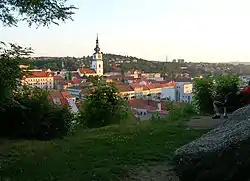 | |
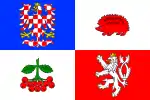 Flag 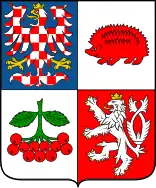 Coat of arms | |
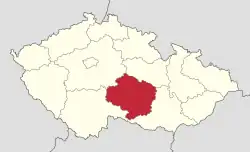 | |
| Country | Czech Republic |
| Capital | Jihlava |
| Districts | Havlíčkův Brod, Jihlava, Pelhřimov, Třebíč, Žďár nad Sázavou |
| Government | |
| • Governor | Vítězslav Schrek (ODS) |
| Area | |
| • Total | 6,795.56 km2 (2,623.78 sq mi) |
| Highest elevation | 837 m (2,746 ft) |
| Population (2019-01-01)[1] | |
| • Total | 509,274 |
| • Density | 75/km2 (190/sq mi) |
| ISO 3166 code | CZ-63 |
| Vehicle registration | J |
| Website | www.kr-vysocina.cz |
The region is located in the central part of the country. It is one of just three in the country (the others being Prague and the Central Bohemian Region) which does not have a border with a foreign country.[2]
The Vysočina Region is home to three UNESCO World Heritage Sites, the most in any region in the Czech Republic.[3]
Administrative divisions
The Vysočina Region is divided into 5 districts:
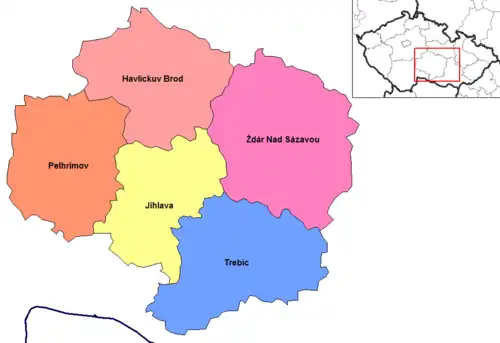 | |||||||||||||
Districts of Vysočina Region
| |||||||||||||
On a lower level, the region has 704 municipalities, second-most in the country behind the Central Bohemian Region.[4]
Geography
The region is located in the central part of the Czech Republic, partly in the southeast of the historical region of Bohemia and partly in the southwest of the historical region of Moravia. The entire Vysočina Region is located in the nature region of Bohemian-Moravian Highlands, from whose colloquial name vysočina (meaning "the highlands") the region got its name. Within the country, the region has a relatively high altitude and is the source of many rivers. The most important rivers are the Sázava, Jihlava, Svratka and Oslava.
Population
As of 1 January 2019 the population of the Vysočina Region was 509,274, which was the third lowest out of regions in the Czech Republic. 49.7% of population were men, which was the highest share in the Czech Republic.[4] The density of Vysočina Region is the second lowest in the Czech Republic (75 inhabitants per km2).
The table shows cities and towns in the region with the largest population (as of 1 January 2019):[4]
| Name | Population | Area (km²) | District |
|---|---|---|---|
| 50,845 | 79 | Jihlava District | |
| 35,691 | 58 | Třebíč District | |
| 23,256 | 65 | Havlíčkův Brod District | |
| 20,847 | 37 | Žďár nad Sázavou District | |
| 16,069 | 95 | Pelhřimov District | |
| 11,484 | 41 | Žďár nad Sázavou District | |
| 10,894 | 51 | Pelhřimov District | |
| 10,098 | 61 | Žďár nad Sázavou District | |
| 9,250 | 54 | Havlíčkův Brod District | |
| 8,110 | 53 | Žďár nad Sázavou District | |
Culture
.jpg.webp)
With three UNESCO World Heritage Sites, the region is home to more of these than any other region of the Czech Republic.[3] These are the historical centre of Telč, the Pilgrimage Church of Saint John of Nepomuk in Žďár nad Sázavou and the Jewish Quarter and St Procopius' Basilica in Třebíč.[3]
Transport
The Vysočina Region is intersected by the D1 motorway, which passes through Jihlava on the way between Prague and Brno. A total of 93 km (58 mi) of motorway is present in the region.[5] The length of operated railway lines in the region is 622 km (386 mi).[5] In 2014 a plan was announced by which a high-speed train, capable of reaching speeds of 350 km/h (220 mph) would run through the region, involving a total of four stops within the territory.[6] Construction is projected to begin in 2025.[6]
Education
In the Vysočina Region there are two organisations providing further education, namely College of Polytechnics Jihlava
References
- "Population of territorial units of the Czech republic". Czech Statistical Office. Retrieved 2019-04-30.
- "Charakteristika kraje Vysočina". Metodická podpora regionálního rozvoje (in Czech). Archived from the original on 24 April 2014. Retrieved 22 April 2014.
- "Vysočina: kraj s nejvyšším počtem památek UNESCO" [Vysočina: region with the highest number of UNESCO monuments]. Právo (in Czech). Novinky.cz. 25 January 2007. Retrieved 22 April 2014.
- "Population of municipalities of the Czech republic". Czech Statistical Office. Retrieved 2019-04-30.
- "Doprava" [Transport] (XLS). Czech Statistical Office. Retrieved 22 April 2014.
- Paclík, Jaroslav (15 January 2014). "Vysokorychlostní vlak pojede až 350 km/h, na Vysočině zastaví čtyřikrát" [High-speed train will go up to 350km/h, stop four times in Vysočina] (in Czech). Retrieved 22 April 2014.